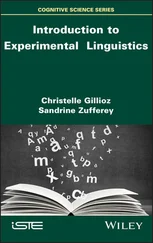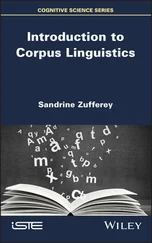sonorant
[±son]
The [+son] sounds are the [+approx] sounds (vowels,
glides and liquids) together with the nasals. The [−son] sounds are
called obstruents (plosives, affricates and fricatives).
continuant
[±cont]
A non-continuant sound or a stop ([−cont]) is one in
which there is a constriction in the oral tract which prevents the
air from passing through. The plosives are [−cont] as are the nasals,
in which the air passes through the nose and not the mouth. All other
sounds (including fricatives) are continuants. (Affricates begin as
[−cont] and then become [+cont].)
strident
[±strid]
Stridency is relevant only for fricatives and affricates. A
strident sound is relatively noisy when compared to a non-strident
one. Labiodentals, sibilants and uvulars (fricatives/affricates) are
[+strid]; all other fricatives/affricates are [–strid].
nasal
[±nas]
Nasal sounds are produced by lowering the velum and
allowing air to pass through the nasal passages. Nasal stops and
nasalised vowels are [+nas]. Sounds made by raising the velum
and thus preventing air from passing through the nasal cavity are
called ‘oral’ sounds and have the feature specification [–nas].
412
Phonological distinctive features
413
lateral
[±lat]
In a [+lat] sound such as [l] the air is made to pass round the
sides of the tongue instead of flowing over the top of the tongue as
with all other sounds.
anterior
[±ant]
This feature is relevant only for coronal sounds. An anterior
([+ant]) sound is made by bringing the tongue towards or onto the
alveolar ridge or the teeth. If a sound is produced with the tongue
placed further back than the alveolar ridge, then it will be a
posterior sound, [−ant]. The anteriors are the dentals and alveo-
lars, the posterior sounds are the retroflex, palato-alveolar and
palatal sounds.
voiced
[±voiced]
In voiced sounds the vocal folds can vibrate during the
articulation of the sound; in voiceless sounds the configuration of
the larynx doesn’t permit this. In English the only sounds which are
phonemically voiceless are the voiceless obstruents (plosives, fri-
catives and affricates) [p t k f s ʃ h tʃ]. Sonorants, including vowels,
in English are all voiced.
aspiration
[±asp]
This feature doesn’t distinguish phonemes in English.
Aspirated consonants are those which are followed by a slight
puff of breath (due to a relatively long VOT). The [−asp] sounds
lack this puff of breath.
Vowel features: some of the following features are also applied to consonants, but for the purposes of this introduction we will regard them as applying just to vowels and glides.
high
[±high]
The [+high] vowels include [i y ɨ u j w]; vowels such as [e, o,
a, ɑ] are [−high]. The body of the tongue (dorsum) is raised close to the
roof of the mouth in high sounds, whereas it occupies a more mid or low
position for [−high] sounds. NB: just because a sound is [−high] doesn’t
mean to say that it’s also [+low] (see below).
back
[±back]
The [+back] vowels and glides include [u o ɔ ɑ ɒ ʌ w], while
the front ([–back]) sounds include [i, y, e, œ, ø, æ, j]. To make a [−back]
sound, the tongue body (dorsum) is brought forward, whereas it is
retracted for the back sounds, such as [u, o, ɔ, ʌ, ɑ, ɒ, w]. The central
vowels such as [ɨ, ə, a] are generally taken to be [+back].
low
[±low]
The low vowels include [æ a a ɒ]. To produce these the tongue
body is brought close to the floor of the mouth. This means that mid
vowels such as [e, o, ɛ, ɔ] are [−low]. (See also [±high] above.)
rounded [±rounded]
Rounded sounds are produced by contracting the lips as
for the sound [u]. Vowels and glides such as [u y œ ɒ ɔ o w] are all
[+rounded].
Appendix 3
Distinctive feature matrix for
English consonant phonemes
p b t d k g f v θ ð s z ʃ ʒ h m n ŋ w l r j tʃ
ʤ
cons
+ + + + + + + + + + + + + + + + + + − + + − +
+
approx
− − − − − − − − − − − − − − − − − − + + + + − −
son
− − − − − − − − − − − − − − − + + + + + + + − −
cont
− − − − − − + + + + + + + + + − − − + + + + −/+ −/+
strid
+ + − − + + + + −
+
+
nas
− − − − − − − − − − − − − − − + + + − − − − − −
lat
− − − − − − − − − − − − − − − − − − − + − − − −
voiced
− + − + − + − + − + − + − + − + + + + + + + − +
[PLACE] L L C C D D L L C C C C C C G L C D L C C C C
C
ant
+ +
+ + + + − −
+
+ + − −
−
Note: L = LABIAL, C = CORONAL, D = DORSAL, G = GUTTURAL
414
Bibliography
Abney, S. P. (1987) ‘The English noun phrase in its sentential aspect’. PhD dissertation, MIT, Cambridge, Mass.
Adger, D. (2003) Core Syntax: A Minimalist Approach, Oxford, Oxford University Press.
Ahlsén, E. (2006) Introduction to Neurolinguistics, Amsterdam, Benjamins.
Aitchison, J. (1991) Language Change: Progress or Decay? (second edition), Cambridge, Cambridge University Press.
(1998) The Articulate Mammal: An Introduction to Psycholinguistics (fourth edition), London, Routledge.
Allwood, J., L.-G. Andersson and Ö. Dahl (1977) Logic in Linguistics, Cambridge, Cambridge University Press.
Archangeli, D. and D. T. Langendoen (eds.) (1997) Optimality Theory: An Overview, Oxford, Blackwell.
Aronoff, M. and K. Fudeman (2005) What is Morphology?, Oxford, Blackwell.
Ash, S. and J. Myhill (1986) ‘Linguistic correlates of inter-ethnic contact’, in D. Sankoff (ed.) Diversity and Diachrony, Amsterdam, Benjamins.
Ashby, P. (2005) Speech Sounds, London, Routledge.
Atkinson, M. (1992) Children’s Syntax: An Introduction to Principles and Parameters Theory, Oxford, Blackwell.
Bailey, B. L. (1966) Jamaican Creole: A Transformational Approach, Cambridge, Cambridge University Press.
Ball M. J, M. Perkins, N. Mueller and S. Howard (eds.) (2008) The Handbook of Clinical Linguistics, Oxford, Blackwell.
Bauer, L. (2003) Introducing Linguistic Morphology (second edition), Edinburgh, Edinburgh University Press.
Bayley, R. and C. Lucas (eds.) (2007) Sociolinguistic Variation: Theories, Methods and Applications, Cambridge, Cambridge University Press.
Beard, A. (2004) Language Change, London, Routledge.
Bell, A. (1984) ‘Language style as audience design’, Language in Society 12: 145–204.
Bell, A. and J. Holmes (1992) ‘H-Droppin: two sociolinguistic variables in New Zealand English’, Australian Journal of Linguistics 12: 223–48.
Berko, J. (1958) ‘The child’s learning of English morphology’, Word 14: 150–77.
Biber, D. and E. Finegan (eds.) (1994) Sociolinguistic Perspectives on Register, Oxford, Oxford University Press.
Bishop, D. V. (1994) ‘Grammatical errors in specific language impairment: competence or performance limitation.’ Applied Psycholinguistics 15: 507–49.
Blake, R. and M. Josey (2003) ‘The /ay/ diphthong in a Martha’s Vineyard community: what can we say 40 years after Labov?’ Language in Society 32: 451–85.
415
416
Bibliography
Blakemore, D. L. (1992) Understanding Utterances, Oxford, Blackwell.
Bloom, L. (1970) Language Development, Cambridge, Mass., MIT Press.
Читать дальше
![Andrew Radford Linguistics An Introduction [Second Edition] обложка книги](/books/397851/andrew-radford-linguistics-an-introduction-second-cover.webp)











